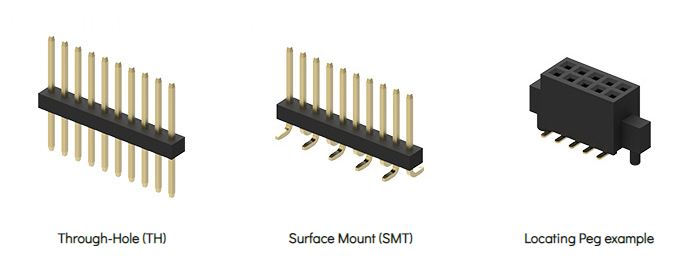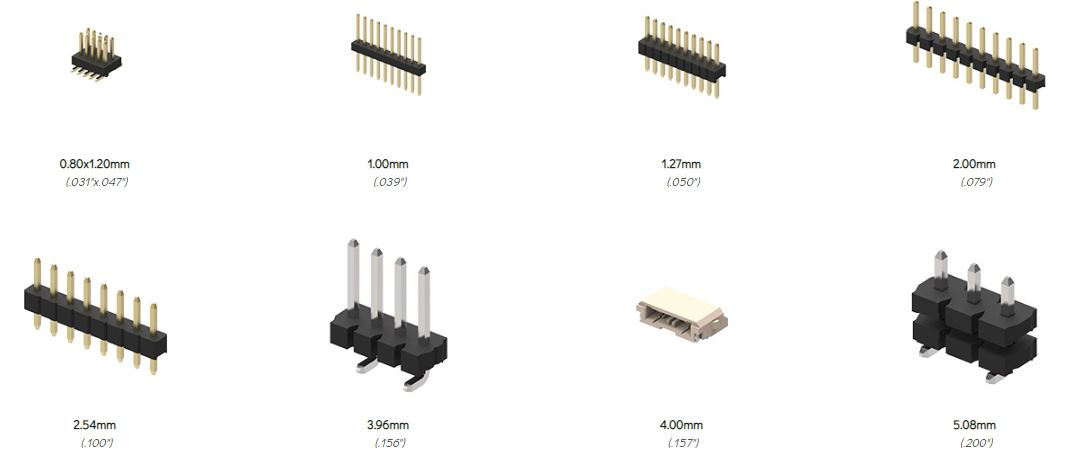Selection and configuration of RFID radio frequency antenna
Selection and configuration of RFID radio frequency antenna
In RF devices, when the operating frequency is increased to the microwave region, the matching problem between the antenna and the tag chip becomes more severe. The goal of the antenna is to transmit the maximum energy into and out of the tag chip. This requires careful design of the antenna and the matching of the free space and the connected tag chip. The frequency bands considered in this article are 435MHz, 2.45 GHz and 5.8 GHz, used in retail products.
Conditions that the antenna must meet:
Small enough so that it can be attached to the required items;
Directionality covered by omnidirectional or hemisphere;
Provide the largest possible signal to the chip of the tag;
Regardless of the direction of the item, the polarization of the antenna can match the query signal of the card reader;
Robust;
Very cheap.
The main considerations when choosing an antenna are:
Type of antenna;
Antenna impedance:
RF performance applied to articles;
RF performance when there are other items surrounding the labeled item.
Possible options
There are two ways to use it:
A) The tagged items are placed in the warehouse, and there is a portable device, which may be handheld, to inquire about all the items and need them to give feedback information;
2) Install a card reading device at the door of the warehouse, inquire and record the entry and exit items. There is also a main choice whether to be an active tag or a passive tag.
Optional antenna
In 435 MHz, 2.45 GHz and 5.8 GHz frequencies, there are several types of antennas that can be selected. The gain of such a small antenna is limited. The size of the gain depends on the type of radiation pattern. The omnidirectional antenna has a peak gain of 0 to 2dBi; the gain of the directional antenna can reach 6dBi. The size of the gain affects the range of the antenna. The first three types of antennas in the table below are linearly polarized, but microstrip antennas can make circular polarizations, and logarithmic spiral antennas are only circularly polarized. Since the directionality of RFID tags is uncontrollable, the card reader must be circularly polarized. A circularly polarized tag antenna can generate a signal of 3dB or more.
Impedance issues
For maximum power transmission, the input impedance of the chip behind the antenna must match the output impedance of the antenna.
For decades, antennas have been designed to match the impedance of 50 or 70 ohms, but it is possible to design antennas with other characteristic impedances. For example, a slot antenna can be designed with an impedance of several hundred ohms. The impedance of a folded dipole can be 20 times the impedance of a standard half-wave dipole. The extraction point of the printed patch antenna can provide a wide range of impedance (usually 40 to 100 ohms).
It is critical to choose the type of antenna so that its impedance can match the input impedance of the tag chip. Another problem is that other objects close to the antenna can reduce the return loss of the antenna. For omnidirectional antennas, such as dual dipole antennas, this effect is significant. Some actual measurements were made by changing the distance between the double dipole antenna and the tomato sauce, and some changes were shown.
Other objects have similar effects. In addition, the dielectric constant of the object, not the metal, changes the resonance frequency. A plastic bottle of water reduces the minimum return loss frequency by 16%. When the distance between the object and the antenna is less than 62.5mm, the return loss will cause a 3.0 dB insertion loss, while the free space insertion loss of the antenna is only 0.2dB. The antenna can be designed to match the situation of approaching an object, but the behavior of the antenna is different for different objects and different object distances. It is not feasible for omnidirectional antennas, so designing antennas with strong directivity will not be affected by this problem.
Radiation pattern
The antenna mode was tested in a non-reflective environment, including various objects that need to be labeled, and the performance was severely degraded when using the omnidirectional antenna. The performance degradation caused by the cylindrical metal listening is the most serious. When it is 50mm away from the antenna, the signal drop back is greater than 20dB. When the distance between the antenna and the center of the object is separated to 100-150mm, the return signal drops by about 10 to 12dB. At a distance of 100mm from the antenna, several bottles of water (plastic and glass) were measured, and the return signal decreased by more than 10dB. Experiments on liquids in wax cartons and even apples yielded similar results.
Influence of local structure
When using handheld instruments, a large number of other nearby objects severely distort the radiation patterns of the reader antenna and tag antenna. This can be calculated for the operating frequency of 2.45 GHz. Assuming a representative geometry, the return signal is reduced by 10 dB compared to free space. When dual antennas are used at the same time, it drops more than the expected mode. In the use environment of the warehouse, it is problematic to have a label on an item box. Several labels are affixed to a box to ensure that a label is visible at all times. There are several antenna problems with the use of portable systems. Two antennas per box are adequate for access control device detection, so that the influence of the local structure becomes less important because the antenna of the card reader of the access control device is fixed at the entrance of the warehouse and points directly to the labeled object.
distance
The gain of the RFID antenna and whether an active tag chip is used will affect the distance of the system. Consider optimistically, when the radiation intensity of the electromagnetic field meets the relevant standards of the UK, in the passive case of 2.45GHz, full-wave rectification, the driving voltage is not more than 3 volts, the optimized RFID antenna impedance environment (impedance 200 or 300 ohms), the use distance It is about 1 meter [3]. If you use the WHO restriction [4], it is more suitable for global use, but the range is reduced by half. These limit the electromagnetic field power from the reader to the tag. The range of action decreases with increasing frequency. If the active chip is used, the working distance can reach 5 to 10 meters.
to sum up
Omnidirectional antennas should be avoided in tags, however directional antennas can be used, which have less radiation pattern and return loss interference. The choice of antenna type must match its impedance with free space and ASIC. The use of antennas in a warehouse seems infeasible unless active tags are used, but in any case, the antenna radiation pattern in the warehouse will be severely distorted. The use of an access control system will be a good choice, and passive tags with short range can be used. Of course, the access control system is more expensive than the handheld instrument, but the staff of the handheld instrument needs to use it to search the warehouse, and the personnel cost is also expensive. In the access control system, each item box only needs 2 instead of 4 or 6 RFID tags, hehe.
Antenk manufactures a wide range of application specific board stacking connectors which were designed and built to specific customer requirements. Our experienced staff has developed custom products in a variety of contact styles, pitches and stacking heights. Our designs range from new concepts to duplicating existing market products identically or with improvements. Many desigsn are produced using automated manufacturing processes to increase reliability and provide significant cost savings
Board to Board Connector
Board-to-board (BTB) connectors as the name indicates is used for connecting circuits board together. This kind of connectors are suitable for stacking circuits boards one over another. Flat flexible cables can be avoided using these kinds of connectors; moreover it makes the entire unit more compact. The commonly used BTB connectors are SMT connectors and Berg Strip. We will discuss about them in detail in the following section.
SMT CONNECTOR
Surface Mount Technology (SMT) connector is a commonly found board-to-board connector in advanced circuit boards. As the name indicates this connector is available only in surface mount model. It is carefully mounted on to the solder pads on the surface of the PCB.
SMT connectors are ideal candidate for miniaturization due to their small area of occupancy and stacking height. They are suitable for double layered or multilayered PCBs. They are designed for high performance and reliability.
They commonly found in advanced circuit boards in networking equipment, telephones, mobile phones, computers and other consumer electronics.
Board-to-board (BTB) connectors are used to connect printed circuit boards (PCB), electronic components that contain a conductive pattern printed on the surface of the insulating base in an accurate and repeatable manner. Each terminal on a BTB connector is connected to a PCB. A BTB connector includes housing and a specific number of terminals. The terminal is made from a conductive material (mostly copper alloy), and plated to improve conductivity and antirust. Terminals transmit the current/signal between PCBs connected by BTB; the housing is made of insulating material (mostly plastic).
The basic types of Board to Board Connector
Broadly speaking, Board To Board Connectors are manufactured in the following types:
Pin Header
Elevated Pin Header
Socket
Elevated Socket
Shrouded Header
Box Header

The way mount Board to Board Connectors on a PCB
board to board connectors are available in through hole (TH) and Surface Mount (SMT) variants.
Locating pegs (also referred to as locating posts, alignment pins or board locks) are used to assist alignment of connectors to the PCB. Locating pegs are particularly useful when using surface mount components.

board to board connectors are available in the following pitches: 04mm/0.5mm/0.8mm/1.0mm/1.27mm/2.54mm/3.96mm/4.0mm
For experienced hardware designers choosing board to board connectors is second nature, for the uninitiated it can be daunting. We offer design support and will help guide you through the options available. If you need help with your board to board connector design, contact antenk. Where required antenk also offer non standard pitches.

Board To Board Connectors
0.4mm Board To Board Connectors,0.5mm Female Board To Board Connector,0.8mm 1.0 mmPcb Board To Board Connector,Board To Board Terminal Connectors
ShenZhen Antenk Electronics Co,Ltd , https://www.antenk.com
